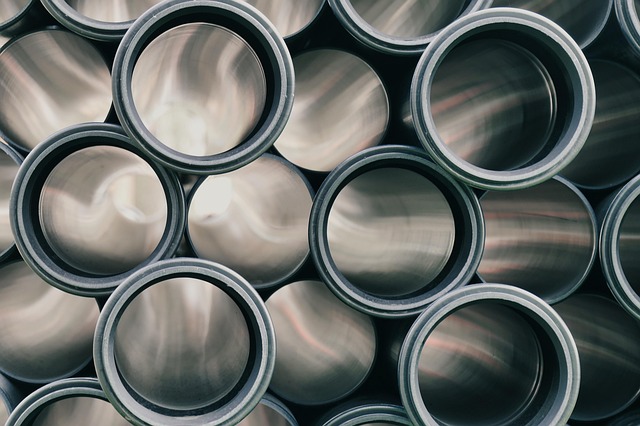Real-Time Methods for Tracking Metal Market Fluctuations
Real-time tracking of scrap metal prices helps recyclers, processors, and buyers respond quickly to market swings. Accurate monitoring combines public market feeds, private marketplace data, physical inspections, and logistical awareness to produce usable valuations. This article outlines practical methods to follow prices and factors that affect scrap metal valuation across ferrous and nonferrous streams.

Marketplace and pricing sources
Digital marketplaces, exchange quotes, and commodity platforms are primary sources for live pricing. Public exchanges deliver benchmark prices for base metals and futures that influence scrap valuations, while specialized scrap marketplaces post local buy and sell offers. Combining exchange data with local marketplace quotes helps reconcile global indicators with regional pricing, accounting for transport and local demand. Many platforms provide API access or daily updates, which enable automated tracking and simple integration with spreadsheet or analytics tools for near real-time alerting.
How to track ferrous vs nonferrous values?
Ferrous (iron and steel) and nonferrous (copper, aluminum, brass, etc.) follow different drivers. Ferrous scrap typically tracks domestic construction, automotive, and steel mill demand; nonferrous prices more closely follow global commodity markets and currency movements. Regular sampling of local yard prices, paired with mill and smelter acceptance specifications, helps determine practical resale values. For businesses, setting up routine data pulls—daily for nonferrous and several-times-weekly for ferrous—strikes a balance between timeliness and noise.
Copper, aluminum and steel: specific indicators
Copper and aluminum react strongly to international demand, manufacturing cycles, and currency shifts; their futures contracts and LME/COMEX quotes are informative. Steel prices are influenced by domestic mill capacity, import/export restrictions, and scrap availability. Monitoring LME/COMEX for base metals, plus regional steel indices and mill reports, provides a layered view: futures for trend and hedging context, and local mill quotes for immediate bid/offer insight. Combining these signals with inventory levels and order books refines short-term expectations.
Valuation factors: quality, contamination, logistics
Accurate valuation requires attention to material quality and contamination. Grades, coatings, mixed alloys, and attached non-metallic components materially change a load’s worth. Logistics—transport costs, local yard capacity, and seasonal collection variability—also affect net price. Implementing consistent sampling protocols, documenting contamination rates, and tracking haul and processing costs ensures valuations reflect delivered condition. For businesses, tagging receipts with quality notes and using photos or quick assays can reduce disputes and improve pricing transparency with buyers.
Using trends and currency signals for timing
Macro trends and currency movements can shift metal prices rapidly. When a major currency weakens, locally priced nonferrous metals often rise in foreign-currency terms; demand cycles—construction booms or manufacturing slowdowns—also show lead/lag behavior with scrap flows. Employ short-term momentum indicators from exchanges combined with moving averages of local yard prices to decide when to sell or hold inventory. Automated alerts for threshold crossings (e.g., copper futures moving a set percentage) help traders and recyclers act without constant manual monitoring.
Real-world pricing and provider comparison
Below are representative providers and typical cost benchmarks for common scrap types to illustrate differences in market channels. These are examples of well-known recyclers and brokers; costs are presented as general ranges and should be verified locally.
| Product/Service | Provider | Cost Estimation |
|---|---|---|
| Ferrous scrap (HMS) | SA Recycling | Est. $150–$350 per ton |
| Copper scrap (prime, bare bright) | Sims Metal Management | Est. $6,000–$9,000 per metric ton |
| Aluminum scrap (clean, extrusions) | Schnitzer Steel | Est. $1,200–$2,500 per metric ton |
| Mixed steel bundle service | EMR (European Metal Recycling) | Est. $200–$450 per ton |
Prices, rates, or cost estimates mentioned in this article are based on the latest available information but may change over time. Independent research is advised before making financial decisions.
These provider entries represent established, verifiable firms in the recycling and scrap metal sector; the cost ranges reflect typical regional variations, freight impacts, and grade differentials. Always request live quotes and confirm acceptance criteria before finalizing transactions.
Conclusion
A practical real-time tracking approach blends global commodity signals with local marketplace prices, regular quality checks, and logistic cost awareness. Using APIs, exchange feeds, yard quotes, and disciplined sampling gives a clearer valuation picture for ferrous and nonferrous streams such as copper, aluminum, and steel. Maintaining a short list of verified local and regional providers and updating cost assumptions regularly helps businesses and collectors adapt to market fluctuations with greater confidence.






